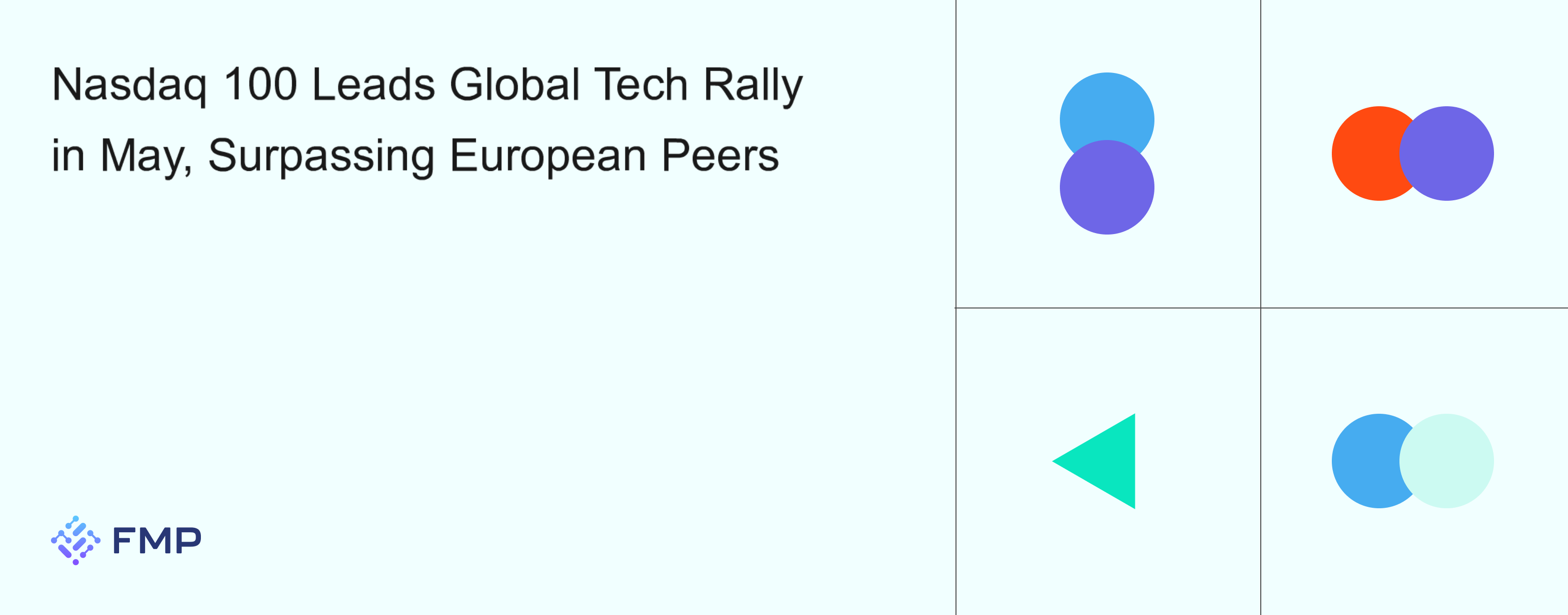
The Nasdaq 100 index emerged as the top-performing global technology benchmark in May, delivering an impressive 8.8% gain and outperforming Europe’s STOXX Europe 600 Technology index, which rose 7.8%.
This strong rebound came after several months of relative underperformance, driven largely by easing trade tensions and a wave of fresh U.S.-Middle East economic agreements.
The Magnificent 7 Power Surge
Deutsche Bank highlighted a standout performance by the “Magnificent 7” — the tech giants that together surged 13.4%, marking their best month since May 2023. This rally was underpinned by:
Renewed optimism following tariff relief measures
Accelerated AI-driven investments
Positive U.S. macroeconomic data
Improved sentiment towards trade negotiations
A spike in crypto and AI-related stock momentum
Key Stock Performances
Nvidia (NASDAQ: NVDA) led the charge, gaining 24.1% in May, benefiting from a high-profile AI partnership with Saudi Arabia and surpassing Q1 revenue expectations.
Google (NASDAQ: GOOGL) jumped over 8%, bolstered by strong earnings and AI initiatives.
Tesla (NASDAQ: TSLA) showed a modest monthly gain of 0.4%, but has surged roughly 46% since April, fueled by Elon Musk’s renewed focus and reports that Tesla plans to launch AI-powered robotaxis in June.
Caution Amid Optimism
Despite the strong May performance, Deutsche Bank cautions that the outperformance may be short-lived. The bank’s report points out that:
Tariffs continue to impose a heavier burden on U.S. corporations compared to their European counterparts.
While the U.S.-China détente on May 12 triggered a rebound, policy risks remain elevated.
A U.S. court temporarily blocked new tariffs, only for another ruling to reinstate them.
Export restrictions on semiconductors are still in effect, creating uncertainty for tech manufacturers.
Broader Sector Gains
May saw all tech sub-industries posting positive returns:
Hardware led the sector with an 11% gain.
IT services posted a bounce in May but remain the weakest segment year-to-date.
For investors looking to track up-to-date sector performance, tools like the Sector P/E Ratio API and Historical S&P 500 Constituents API offer comprehensive insights into sector trends and index membership changes.

